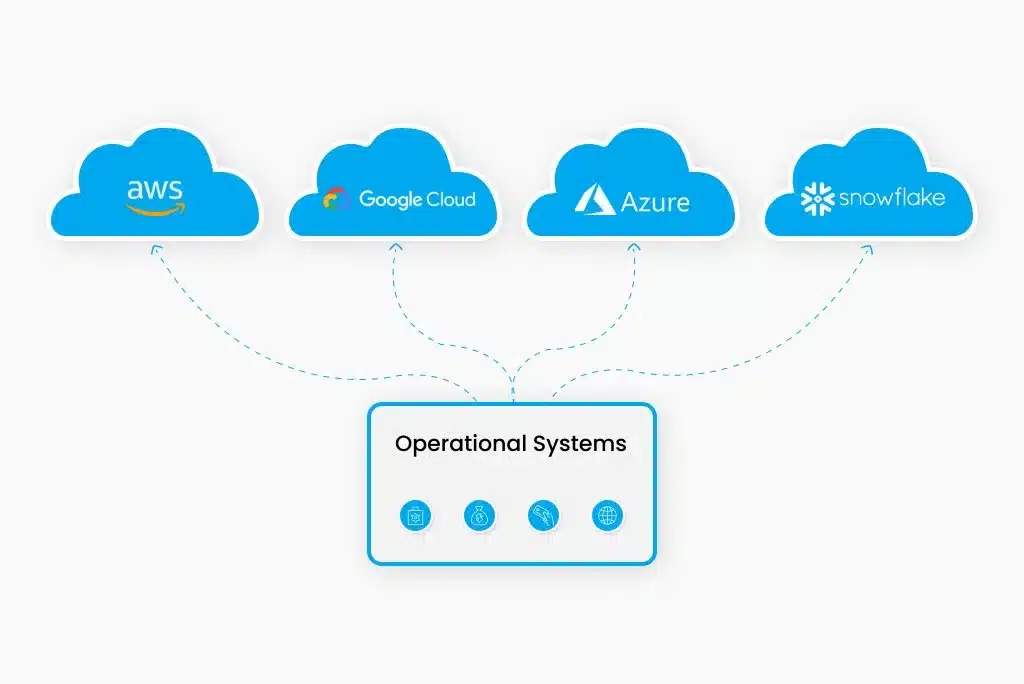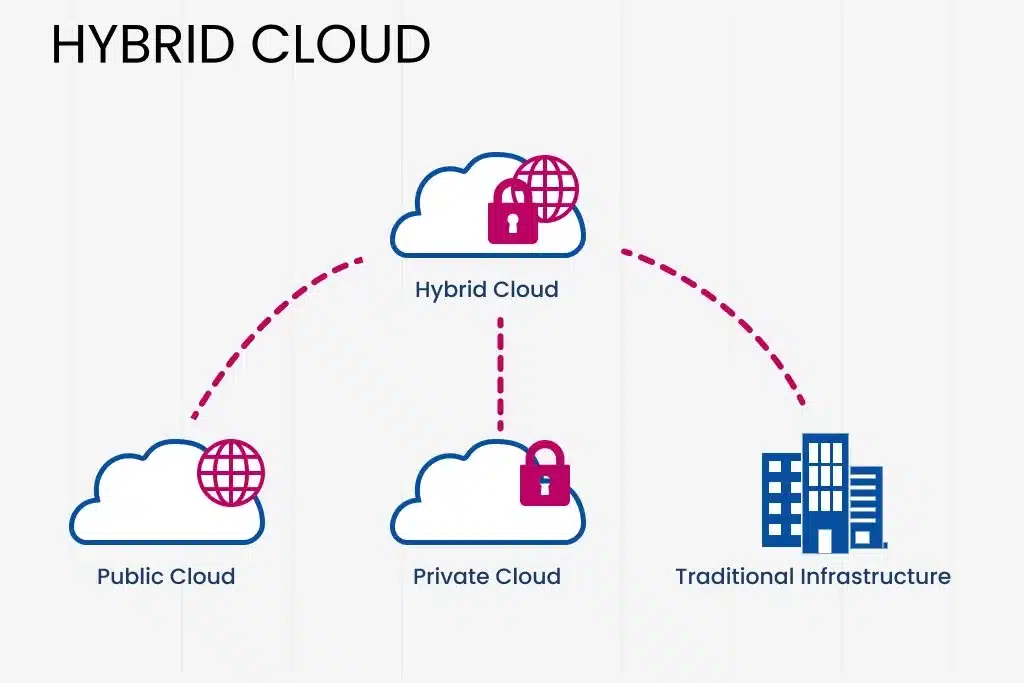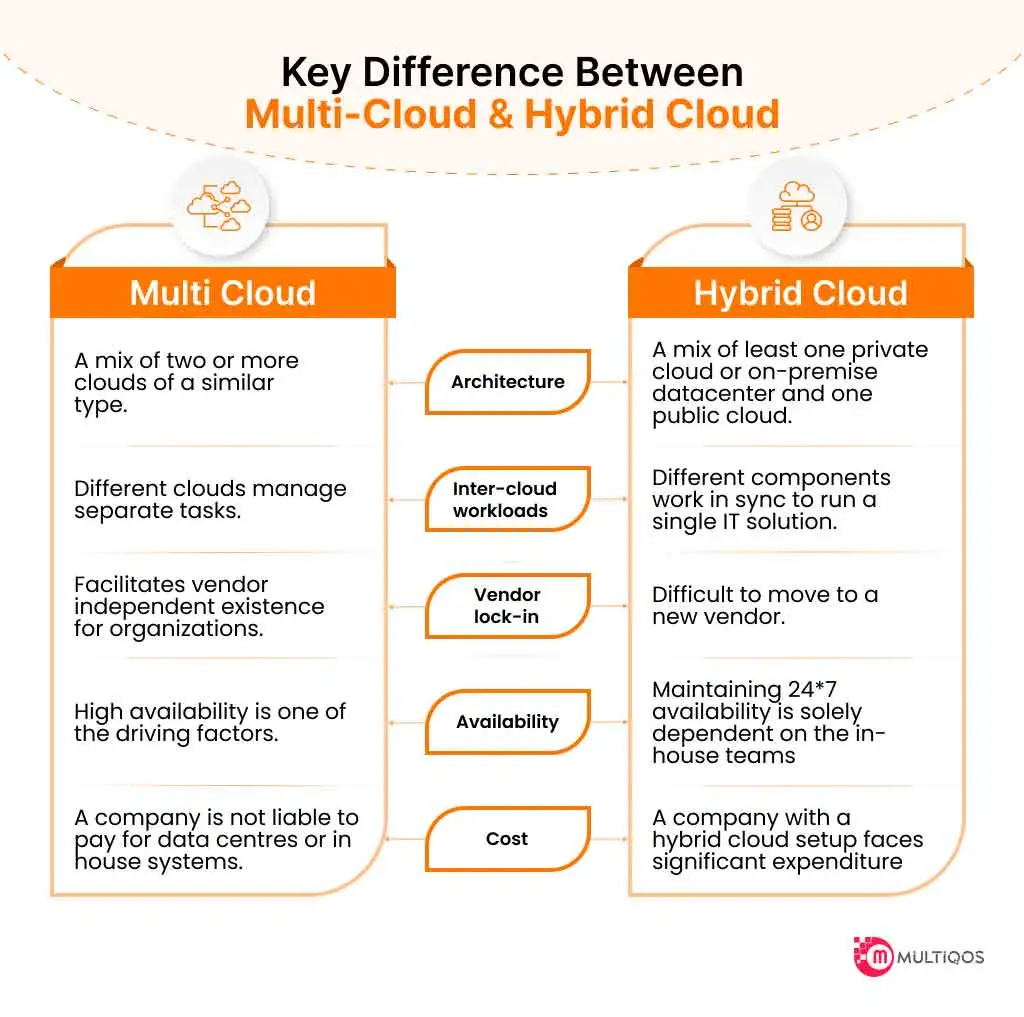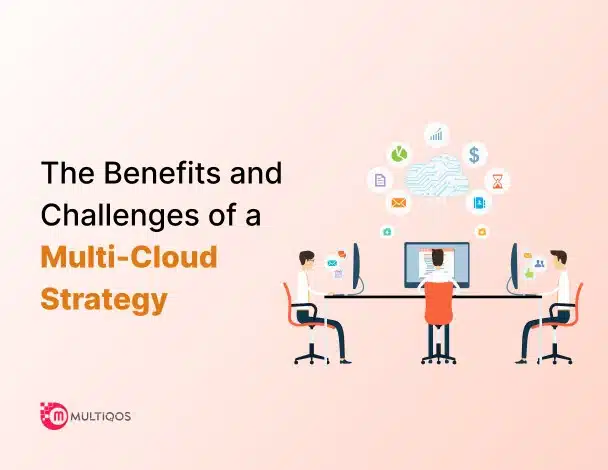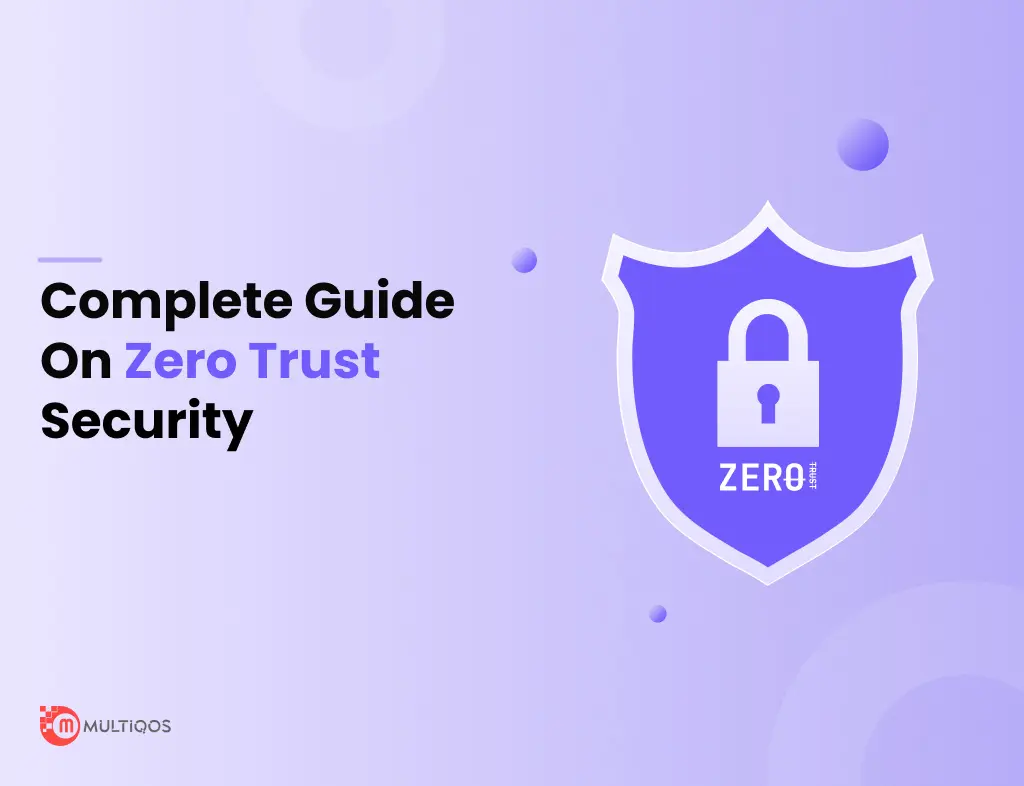Multi-Cloud Vs Hybrid Cloud: The Main Difference Between Two Cloud Platform
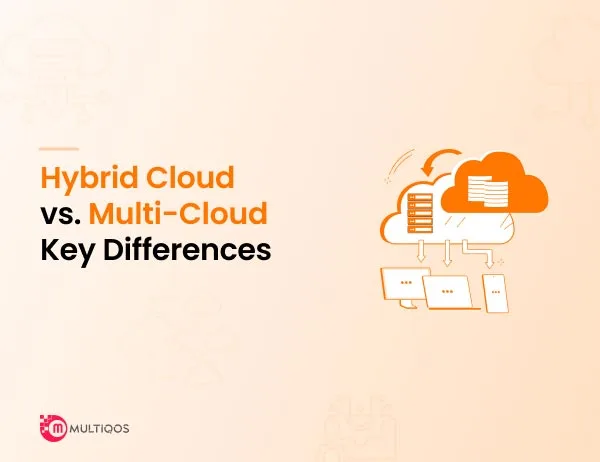
Multi-cloud or hybrid cloud, are these both the same cloud strategies? Probably yes! Probably not! These are the kinds of answers you can expect from different users with brief knowledge of cloud strategies. Well, yes, as being synonyms, multi-cloud and hybrid cloud strategies are often misunderstood as being the same. The truth is, they are not!
Although being used interchangeably, they have one fine line between them distinguishing major differences in their characteristics. That’s where the pros and cons of choosing either one take place, which requires proper research and analysis.
If you want your business to be one of the contributors in the public cloud market share, which is expected to reach USD 690.30BN in 2024, then knowing this difference between choosing the right cloud strategy creates a pressing need.
Considering that, we have put our extensive market research in this blog, which will guide you throughout, from understating both cloud terms to their characteristics and deciding when to choose what and when not.
What is Multi-Cloud?
As the name suggests, multi-cloud is a strategy where you can utilize multiple cloud computing services, like AWS, Microsoft Azure, Google Cloud Platform (GCP), etc., for your single project to meet your various business needs. For example, your client-side application is managed through the AWS cloud, and its information exchange servers are hosted on Microsoft Azure.
To fill in the gap of one cloud platform, businesses can harness the power of another platform by integrating it with it to avail the best-of-breed IT services for their end users.
Not just that, the multi-cloud approach offers several benefits to businesses, which include redundancy, flexibility, vendor diversity, and the ability to choose world-class services from different vendors. This helps in mitigating cloud risks associated with vendor lock-in and gives businesses the flexibility they need to ensure performance optimization and embrace the power of compliance and data sovereignty.
That’s the reason why 79% of small businesses, 84% of midsize companies, and 94% of large enterprises have adopted a multi-cloud strategy.
Apart from selecting different cloud services from different cloud vendors, a multi-cloud environment also allows organizations to use different cloud services, such as Software as a Service (SaaS), Infrastructure as a Service (IaaS), and Platform as a Service (PaaS), provided by different cloud service providers.
Well, this is all about seeing the bright side of the multi-cloud approach. But if you look the other way, there’s concern for businesses as well. Those concerns or difficulties related to it include complexity in orchestration, integration, security, and governance.
There, when working with a multi-cloud strategy, businesses need robust cloud and services management tools, managed automation, and robust cloud governance frameworks to effectively manage and optimize multi-cloud assets without missing out on regulatory compliances.
What is Hybrid Cloud?
In comparison with the multi-cloud strategy, hybrid cloud computing differs significantly, which covers the inclusion of private cloud infrastructure, such as the business’s own data center, along with multiple public cloud services, to satisfy both, in-house and remote accessibility demands. It allows data and applications to be shared between private and public cloud infrastructures while maintaining the security clauses.
In a hybrid cloud setup, businesses can use the combination of on-premises infrastructure, private cloud services, and public cloud setups, from Amazon Web Services (AWS), Microsoft Azure, or Google Cloud Platform (GCP).
If we look at the characteristics of a hybrid cloud set, they include:
- Offering scalability of computing resources, scaling them up or down based on the demand by utilizing public cloud services while ensuring these data in private cloud setups.
- Offering the greatest control over sensitive data and applications by keeping them close to private clouds while leveraging public clouds for other flexible tasks.
- Providing flexibility in choosing where to run which workloads based on performance, cost, and other important considerations.
- In the situations of disasters, the hybrid cloud also offers the ability to implement robust disaster recovery and business continuity plans to replicate data and applications across multiple cloud availability zones and its remote locations with security keys and backup setups.
Overall, you can say that along with the ease of data security, hybrid cloud architecture offers businesses the flexibility, scalability, and security needed to meet their twisting needs, considering cost and performance needs.
Multi-Cloud Vs. Hybrid Cloud: Citing Key Differences
The misconception between the understanding of multi-cloud and hybrid cloud strategies often makes organizations end up choosing the wrong one, which, of course, you don’t want to do. Because it can lead to time and financial resources wastage. Hence, you should consider the following key differences distinguishing the characteristics and advantages of both platforms, helping you make informed decisions.
Architecture
As a multi-cloud strategy comprises the use of multiple cloud platforms under one premise, it ensures decoupled environments. It’s like having multiple cloud providers underneath and operating simultaneously but working independently without any need for deep integration between them. Here, each cloud operates as a separate environment utilizing its services, APIs, and management interfaces.
In a multi-cloud architecture, organizations deploy workloads and data across different cloud platforms as per their performance, cost, location, and feature set requirement, to run concurrently on different cloud providers independently. With this ease, a multi-cloud environment can be complex to manage due to the need for resource coordination, configurations, and managing multiple vendor’s bills.
On the other hand, Hybrid cloud architecture is more like an integrated mesh of on-premises infrastructure with various public cloud infrastructures. This offers organizations seamless data and resource portabilities from on-premises to public cloud environments and vice versa. To manage a hybrid cloud, a unified management/orchestration framework is required to seamlessly manage resources across environments. Because of this admins can centrally monitor and manage workloads, data, and networking configurations required for the same.
In order to manage the hybrid cloud in a better way, organizations often use virtual private networks (VPNs), direct connections, or dedicated interconnected networks to establish secure and efficient communication channels.
Data and Workload Placement
The multi-cloud setup uses various cloud ecosystems to distribute and manage separate tasks for each system to run operations independently and swiftly. Therefore, multi-cloud becomes the best fit to choose for complex yet distributed tasks, which takes inter-cloud workload less comparatively.
On the contrary, a hybrid cloud strategy leverages different components working together for the required workloads, which can make it a little bit more stressful for the system.
Availability
In the quest for availability, multi-cloud environments potentially offer higher availability as compared to single-cloud and hybrid cloud scenarios. It distributes tasks across different cloud modules to mitigate the risk of service outages or associated downtimes. It enables organizations to deploy data across different geographic regions to reduce the impact of regional failures and enforce robust disaster recovery and business continuity commitments.
On the flip side, hybrid cloud setups include redundancy and failover mechanisms across on-premises and public cloud environments to enhance data availability. It also offers robust disaster recovery solutions between the integrated systems.
In essence, while both aim to improve availability and resilience, they differ in the way of tackling. Hence, it becomes necessary for organizations to assess their specific requirements, tolerance for downtime, and budget constraints when choosing the right cloud strategy.
Data Sovereignty
Data sovereignty is a concept that shows affirmation for the data that is under the control of certain laws and regulations of the country or region in which it is located.
A multi-cloud environment gives businesses more control over the applications as they get the flexibility to host workloads across different cloud platforms.
On the other hand, the hybrid cloud offers robust data control as it scales across different cloud providers, along with having stakes in on-premises data storage systems.
Performance
Basically, multi-cloud systems provide more flexibility and efficiency compared to a hybrid cloud strategy. With a multi-cloud setup, organizations can utilize the different features of various cloud providers and customize their infrastructure as per their specific business requirements.
With a multi-cloud approach, organizations get to select the best cloud service provider to each application or service to specific ones. This way, they can also take advantage of diverse data center locations, network configurations, and service options to enhance performance and minimize workload latency.
On the other hand, Hybrid cloud architecture offers flexibility in workload deployment and resource allocation, and can face business scalability challenges due to the complexity of integrating on-premise infrastructure with cloud environments.
However, it can be delivered on-premises and ensure communication and seamless data transfer between cloud environments, which requires careful network design and optimization. While hybrid cloud solutions can deliver performance benefits for a specific business by leveraging on-premises resources, another strategy should be to invest in network infrastructure and application architecture to achieve efficiency in this shared space.
Security
Well, in terms of security, both multi-cloud and hybrid cloud offerings have their pros and cons. While a multi-cloud strategy offers better security through redundancy and diversification, hybrid cloud environments enable organizations to have better control over their sensitive information by storing those on-premises or in private cloud environments.
In the multi-cloud strategy, organizations get the first hand on selecting cloud providers offering robust security features and compliance certifications for specific security demands. On the other hand, with a combination of private and public repository storage, hybrid cloud setups allow businesses to implement customized security measures tailored to their requirements and compliance standards.
Cost
As the name suggests, the multi-cloud strategy utilizes services of different public cloud platforms, which have their different subscription costs for their offerings, such as computing, storage, networking, and additional computing features.
If organizations want to transfer data between different cloud providers, then they also have to pay fees for moving data out of each provider’s network. Also, it does ask for additional time and resources for multi-cloud monitoring, governance, and administration.
On the bright side, a multi-cloud environment does allow the flexibility to utilize the cloud when and as needed, enabling it to scale up and down as needed for particular workloads.
In the hybrid structure, the majority of the cost is incurred due to infrastructure investment and management needs, integration costs with public cloud services, and other ongoing operational expenses.
Apart from that, organizations also get cloud cost optimization opportunities by leveraging its resource flexibility, various hybrid cloud management tools, and pay-as-you-go pricing models.
When Should One Choose Multi-Cloud And When Should One Opt For Hybrid Cloud?
It’s quite tricky to directly make the decision to choose between multi-cloud or hybrid cloud deployment as several factors play their roles, including business objectives, technical requirements, performance, security, compliance, and cost considerations. Here are some of the conditions you can look for:
You can choose Multi-cloud when:
- Need to avoid vendor lock-in and want the flexibility to choose the best services from different cloud providers.
- Want to achieve geographic diversity and redundancy to ensure high data availability and reliable disaster recovery?
- Certain workloads or applications require specific bandwidth and features.
You should choose a Hybrid cloud when:
- Data sovereignty requirements ask for keeping certain data or workloads on-premises or in specific geographic regions.
- Requirement for integrating cloud strategy with legacy or on-premises infrastructure.
- It’s a must to have total control over sensitive business data.
Well, there are many reasons to choose any of the cloud strategies, however, these often come out as pressing reasons to choose either of the one.
Why Choose MultiQoS for Your Cloud Computing Project?
Regardless of which cloud strategy you choose, be it a multi-cloud or hybrid strategy, both enable organizations to offer their users the services they want. It’s just a matter of cost, cloud management efforts, and smart streamlining you’re ready to give in.
At MultiQoS, we are always excited to know different business cloud requirements and challenges and help them solve such by providing robust and reliable cloud computing solutions, from strategic consulting to ongoing cloud support and maintenance. So, are you someone looking for a trusted cloud services provider? MultiQoS is at your service. Share your requirements with us and get the best-fit solution meeting your needs.
Want to Streamline Your Business with Cloud Transition?
Boost productivity and ensure seamless customer experiences with our elite cloud solution.
FAQ on Multi-Cloud Vs Hybrid Cloud
Yes, of course. As both strategies are not mutually exclusive, they can be converted into another version. When a hybrid cloud is integrated with two or more public cloud architectures, it can become a multi-cloud. On the other hand, multi-cloud can also be a hybrid cloud if integrated with on-premises systems and architecture.
Choosing the right cloud strategy for your business landscape is very important as it can play a big role in your IT infrastructure and its offerings. So, for the same, you should consider your business objectives, workload requirements, data security and compliances, cost considerations, scalability and flexibility requirements, performance and reliability, vendor ecosystem and support, organizational readiness and skills, and future growth.
Based on the careful implementation and findings considering different use cases, there are a total of four types of cloud computing approaches: Public, Private, Hybrid, and multi-cloud.
Popular businesses in the world, like Netflix, Airbnb, Uber, Hulu, and many others, have successfully adopted a hybrid cloud strategy.
Among many cloud service providers available in the market, Amazon Web Services (AWS), Google Cloud Platform (GCP), and Microsoft Azure are widely adopted as they offer top-notch services to businesses and users.
Get In Touch

